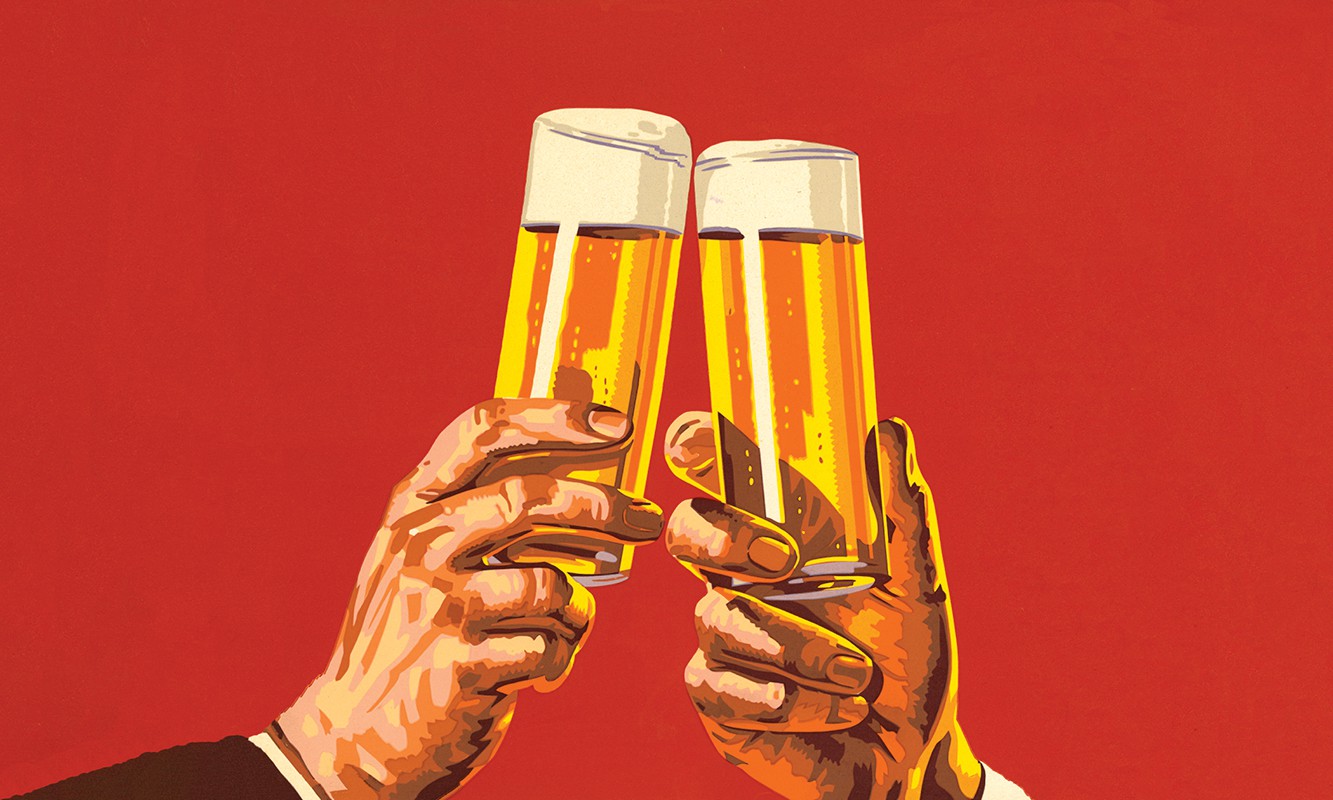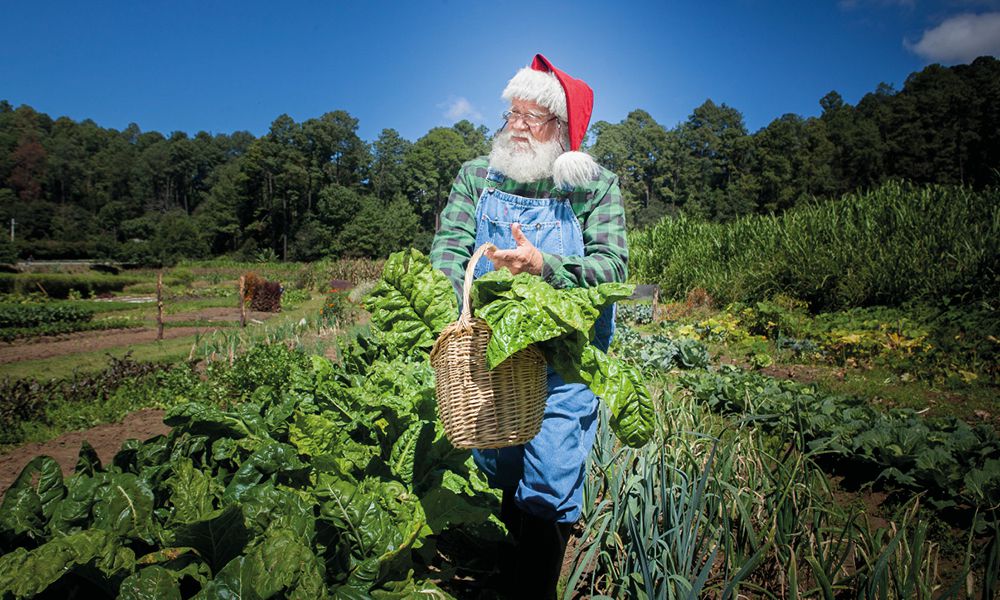This content has been archived. It may no longer be relevant
We’ve all been there at some point haven’t we? Dinner with the in-laws, a holiday party, lunch with the girls. You swirl your drink around a glass that seems far too large for the miniscule splash of… was it a merlot or blend?
“So, what do you think?” the waiter/father-in-law/Auntie Sheryl asks.
You suck the wine through your teeth, stifling a slurp, desperately searching for hints of blueberry balanced with the smoke of a 500 year old oak tree planted in the backyard of a Norwegian pig farmer.
The table holds their breath as you look up and, with a dribble escaping from the corner of your mouth you say, “Yes, it’s really good.”
Kris Cush is the head winemaker at Gerler Wines and City Winery Brisbane. Kris has always grown up around wine with her father growing his own vineyard in Tasmania when she was just 8 years old. After studying winemaking at Uni and meeting her now-husband and business partner, Dave Cush, the pair opened City Winery in 2019 with the goal of making the industry more accessible to the public.
The team at Proctor had the pleasure of chatting with Kris about where a bunch of fermented grapes got such a prestigious reputation and how to select and enjoy wine during the holidays–even if it’s not your thing.
Hi Kris, thanks so much for taking the time to chat with us. Have you ever experienced that awkward moment where someone is asked to taste wine for a table and they very clearly don’t know why they’re tasting it?
Absolutely. When (the waiter) is giving you a splash (of wine) they’re looking for cork taint. That’s your chance to say “this tastes like cardboard”. Cork taint will smell like wet cardboard, mouldy and damp. When you taste it the flavours will be flat instead of bouncing with fruit. It’s ridiculous when you see people swirling and they look up and say “Mmmmm, yes, it’s okay”. That’s not quite right. Is it or isn’t it corked? (Nobody) is asking your opinion on whether or not you like it. You’ll even see waiters providing that tasting step when it’s a screwcap. There is no cork, so there can’t be any cork taint!
A lot of the cork that we use in Australia is called composite cork which doesn’t have cork taint whereas natural cork often can have a mould (tricloro anasol) which comes from a mould growing in the cork tree. A lot of corks, if you look at them, have been chopped up into tiny pieces then chucked into liquid carbon dioxide, which then kills any mould. Then the cork is squished back into shape again. There isn’t cork taint in composite cork because it has been treated.
For those who perhaps are not graced with the wisdom of wine, what sort of things should you be looking for when making a selection at a restaurant or for dinner party?
It’s always about variety and region combinations so you always have to remember that some varieties of grapes and wine just grow so much better in specific regions. For example, Shiraz you’ll look at Barossa, Riesling you look at Clare Valley etc. There are some region variety combinations that are just tried and true and that’s a great place to start.
We also offer a really great food and wine pairing experience at City Winery.
Is there a great difference between a $75 bottle of wine and a $14 one? What are the differentiating factors between types of wine?
A $14 bottle of wine might lack character… but if you’re looking at a cheaper wine always go for the bigger brands because they always make their entry-level wines quite good, including us (City Winery). We try to make our entry-level wines really good so you come back! But a small distributor selling cheap wine–there’s something funny there.
When tasting wine, how do you pick out tasting notes and what sort of descriptive words should you use to describe what you’re tasting?
I tend to tell people to focus on the feeling of the wine rather than the flavours. Is it smooth, silky, round, or tight? Is it edgy or velvety? Use tactile words. That describes a wine way more than pulling out flavour characteristics.
But if you wanted to start looking at flavours, you can start with the smell. For example, you can smell a wine and be overwhelmed by the smell of black currents so if something stands out then yes, it’s worth mentioning but try talking in spectrums. Is it black fruit or red fruit? Floral or is there something herbal about it? There are four different big areas that you can focus on but the only way to learn is to put in a big effort!
If you have a fairly basic understanding of wine are there some rules to apply when pairing a wine with a dish? You hear things like white for fish and red for steak but what are the nuances to take into consideration when you’re looking to pair a wine with a meal?
It’s so broad but what you want is harmony between the food and the wine, you definitely don’t want anything to be overpowering the other. If you’re spending a decent amount of money on wine–because that’s usually where the money goes when you’re eating out–you don’t want to choose something on the menu that has really full-on flavours like Thai with chilli. Chilli will kill all wine except sweet wines, so avoid anything with chilli because it’s a waste of money buying an expensive wine that you can’t taste! I do love chilli, but if you’re going to do that perhaps choose a Riesling with residual sugar.
If you’re having a really acidic salad or a buttery sauce that’s going to affect the wine. (Pairing) has to do a lot with the sauces used to compliment your dish (because this determines the flavour). For example, if you’re having a salad with a vinaigrette you can pair it with an acidic wine. If you pair the salad with a wine with low acid, the wine will taste flat. So what you want to do is choose a variety that has inherently high-acid so chardonnay not-so-much but you should look at a pinot grigio, sauvignon blanc.
Could you debunk the most commonly spouted wine commentary which is the concept of legs? What are people looking for when they swirl their glass and are legs along the side of the glass just reflective of the alcohol content of the wine?
Yes, the legs of a wine refers to the alcohol content but most importantly – who cares! People need to stop pretending because you can see straight through them. Stop talking about the legs!
I love swirling my glass, but it’s not about the legs. It actually helps the aromas come out of the glass, so I’m constantly swirling and smelling. If you’re not smelling then why are you swirling? Otherwise, you just look silly.
The wine industry has historically held a bit of a pretentious reputation. Is there some truth to this and what are the benefits (and potential struggles) with making it more accessible?
The wine industry historically has a bit of a pretentious reputation but you don’t want to destroy the romance completely. For the wine industry, this perception is largely based on jargon and derives from consumer perception rather than within the industry itself. People hear the jargon associated with wine and feel left out, but at City Winery, we want to empower people with their own language and interpretation of wine.
As you’ve described yourself as someone who doesn’t buy into this notion of pretension, do you hold a responsibility to change the industry from within with more accessible education?
Absolutely, the whole concept for City Winery was to break down those barriers and I think we’ve done that quite well. This coming year I’ll be processing 10 tonnes of grapes and people will be able to come and see it, smell it, taste it. And at the end of the day, it’s just fermented grapes! It’s nature doing its thing and we’re just helping it along.














Share this article